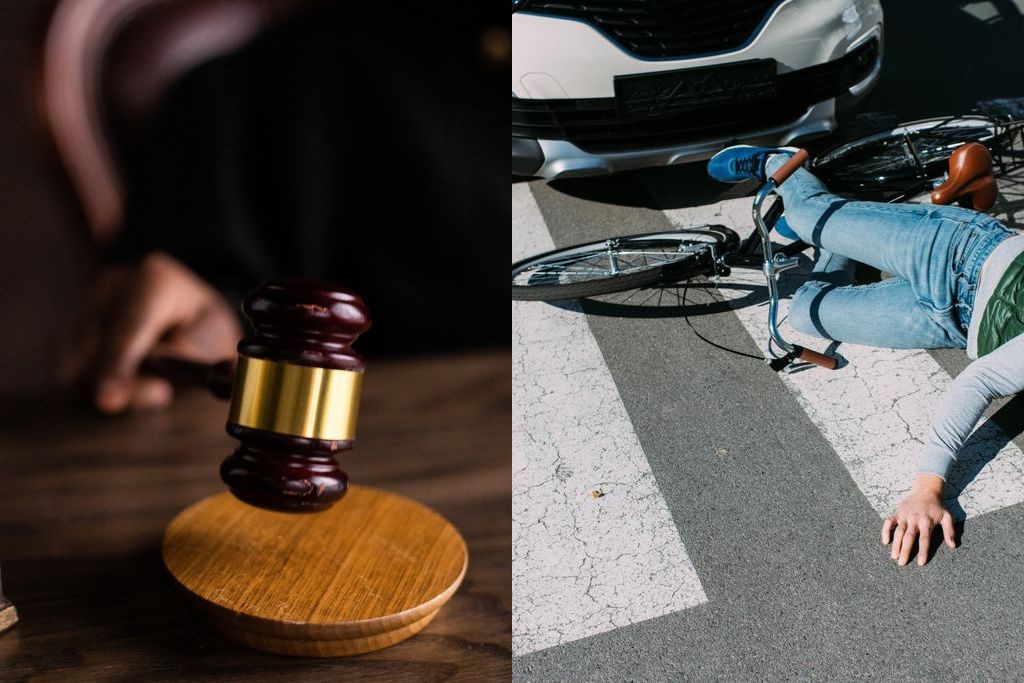
A right-hook bicycle accident is more than just a collision. A sudden disruption shatters your cycling adventure. Instantly, what started as a leisurely ride transforms into a horrible encounter with a turning vehicle. This alarming incident highlights a significant safety concern for cyclists navigating urban streets.
This article will explore every detail you must know about right hook accidents. Also, don’t forget to contact a bicycle accident lawyer for assistance if you’re involved in a right-hook bicycle accident.
Understanding the right hook accident
A right hook accident occurs when a motor vehicle, essentially a car or a truck, makes a right-hand turn directly into the path of an oncoming cyclist. This collision often happens at intersections or junctions where the vehicle fails to yield the right-of-way to the cyclist proceeding straight ahead.
Causes of right hook accidents
The causes of right-hook bicycle accidents are rooted in various factors, often around the motorist’s lack of awareness and visibility. Here’s what you need to know:
- Failure to check blind spots: Motorists operating larger vehicles, such as trucks or buses, may have significant blind spots. These blind spots can obscure cyclists from their view, leading to a failure to detect their presence before executing a right turn.
- Misjudgment of cyclist speed: In other cases, motorists may misjudge the speed of an approaching cyclist, underestimating the time needed to complete a right turn safely. This misjudgment can result in a collision if the cyclist travels faster than the motorist anticipated.
- Inattentiveness or distraction: Drivers may become distracted by various factors, such as mobile devices, passengers, or external stimuli. This distraction can divert their attention from the road, causing them to overlook nearby cyclists.
- Failure to yield right-of-way: Some motorists may simply fail to yield the right-of-way to cyclists when making a right turn, either due to a lack of understanding of traffic laws or a disregard for the presence of cyclists on the road.
- Limited awareness of cyclists: Motorists may need to be more aware of cyclists sharing the road. This lack of understanding can lead to a failure to anticipate and accommodate cyclists in maneuvers such as right turns.
- Environmental factors: Environmental factors such as poor lighting, adverse weather conditions, or obstructed visibility can further exacerbate the risk of right-hand-catch accidents by reducing motorists’ ability to see cyclists.
Impacts cyclist face as a result of right hook accident
Injury spectrum
- Minor injuries: Cyclists involved in proper hook accidents may sustain minor injuries such as cuts, scrapes, and bruises, requiring primary first aid treatment.
- Moderate injuries: Some cyclists may suffer more significant injuries, including sprains, strains, and minor fractures, requiring medical attention and possibly rehabilitation.
- Severe injuries: Cyclists may sustain severe injuries such as multiple fractures, traumatic brain injuries (TBIs), spinal cord injuries, or internal organ damage, necessitating extensive medical treatment and long-term care.
- Fatalities: Some proper hook accidents result in the death of the cyclist, devastating families and communities and highlighting the urgent need for improved road safety measures.
Emotional impact
- Fear and anxiety: You may experience heightened fear and anxiety about cycling on roads following a right hook accident, impacting your confidence and enjoyment of cycling.
- Post-traumatic stress: You can also develop symptoms of post-traumatic stress disorder (PTSD), including flashbacks, which can significantly impair your quality of life.
- Loss of independence: Severe injuries sustained in proper hook accidents may lead to your loss of independence as a cyclist, requiring assistance with daily activities and mobility.
- Financial burden: After the accident, you can also experience financial burdens. The economic costs of medical bills, rehabilitation, lost income, and potential legal fees can burden you and your family.
Preventive measures
To counter and limit bicycle hook accidents, both cyclists and motorists should keep in mind the following:
Motorist responsibilities
Vigilance
You must always remain vigilant, especially when approaching intersections or turning right. This will ensure the safety of cyclists.
Proper checks
When executing a right turn, you should thoroughly check your surroundings, including using side mirrors, checking blind spots, and signaling your intention to turn in advance.
Awareness of cyclists
You should be aware of cyclists on the road and give them sufficient space and consideration when making maneuvers, including yielding the right-of-way as necessary.
Cyclist precautions
Enhanced visibility
Cyclists can enhance their visibility to motorists by wearing brightly colored clothing during the day and using reflective gear or lights at night or in low-light conditions.
Proper positioning
Cyclists should position themselves perfectly on the road, especially at intersections or junctions, to ensure they are visible to motorists and minimize the risk of being overlooked.
Communication
Cyclists should communicate their intentions clearly to motorists by using hand signals to indicate turns or changes in direction and making eye contact with drivers to ensure mutual awareness.
The final say
A right-hook bicycle accident poses a significant risk to cyclists on the road. By better understanding the causes, consequences, and preventive measures, either as a motorist or cyclist, you can contribute to a safer roadway and limit the incident. If you’re the victim of a right hook bicycle accident, then documenting all the evidence can help your case.
The article Here’s everything you need to know about the right hook bicycle accident first appeared in TravelDailyNews International.
